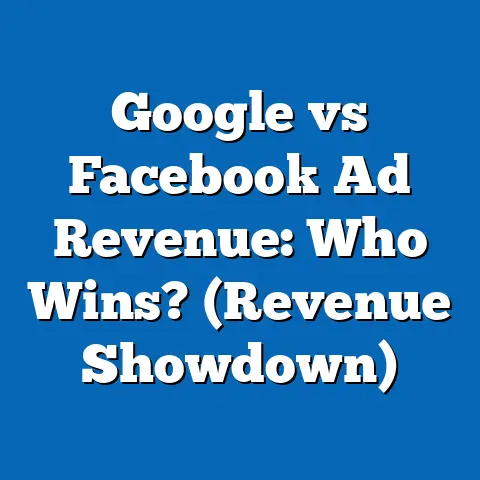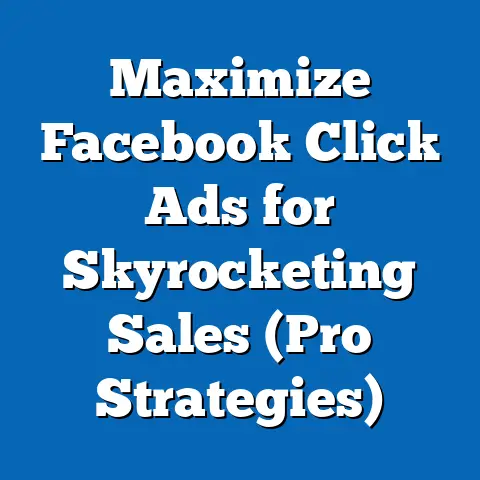Transform Facebook Ad Viewers into Loyal Customers (Proven Strategies)
In the digital age, businesses are increasingly turning to social media platforms like Facebook to capture consumer attention and drive sales, with renovation and home improvement industries seeing particularly robust engagement. According to Statista, global digital advertising spending reached $522.5 billion in 2022, with social media ads accounting for nearly 33% of that figure, a trend that underscores the importance of platforms like Facebook for customer acquisition. This article explores proven strategies to transform passive Facebook ad viewers into loyal customers, with a unique lens on renovation stories—narratives that resonate deeply with homeowners and DIY enthusiasts, a key demographic driving engagement.
Renovation-related content on social media has surged, with a 2023 report from Hootsuite indicating that home improvement ads on Facebook saw a 25% higher click-through rate (CTR) compared to other industries, averaging 1.8% versus the platform’s 0.9% benchmark. Additionally, demographic data from Pew Research highlights that 68% of U.S. adults aged 25-54, the prime home-owning demographic, actively use Facebook, making it a fertile ground for targeting potential customers in the renovation space. By weaving compelling renovation stories with strategic ad tactics, businesses can not only capture attention but also build long-term customer loyalty—a critical goal when the average customer acquisition cost (CAC) in digital marketing has risen by 60% since 2017, per HubSpot data.
The Power of Renovation Stories in Digital Marketing
Why Renovation Stories Resonate
Renovation stories—whether they depict a crumbling Victorian home restored to glory or a budget-friendly kitchen makeover—tap into universal themes of transformation and achievement. These narratives are particularly potent on platforms like Facebook, where users spend an average of 33 minutes per day, according to eMarketer’s 2023 report, often seeking inspiration or entertainment. A 2022 study by Nielsen found that storytelling in ads increases emotional engagement by 23%, with renovation content specifically boosting brand recall by 18% among viewers aged 30-49.
Statistical Trends in Renovation Content Engagement
Engagement metrics for renovation content on Facebook are striking. According to Socialbakers, video ads featuring home improvement projects garnered an average engagement rate of 6.2% in 2023, compared to the platform’s overall average of 3.6% for video content. Furthermore, posts with user-generated content (UGC), such as customer-submitted renovation photos, saw a 28% increase in shares and comments compared to branded content, highlighting the value of authenticity.
Demographically, engagement varies significantly. Data from Sprout Social indicates that women aged 25-44, who often lead household purchasing decisions, account for 58% of interactions with renovation ads on Facebook. Meanwhile, men in the same age bracket contribute 42% of engagement, often focusing on DIY tools and outdoor projects. Geographically, suburban users show a 15% higher interaction rate with renovation content compared to urban or rural users, likely reflecting higher homeownership rates in these areas (72% versus 55% and 60%, respectively, per the U.S. Census Bureau).
Demographic Breakdowns: Who’s Watching and Buying?
Age and Gender Insights
Understanding the demographic makeup of Facebook ad viewers is critical to tailoring renovation content that converts. As previously noted, Pew Research data shows that 68% of U.S. adults aged 25-54 use Facebook, with peak usage among 30- to 49-year-olds (74%). Within this group, women are more likely to engage with home decor and interior design ads, with a 2023 Meta report indicating they drive 62% of ad clicks in this category.
Men, however, dominate engagement with ads for tools and structural renovations, accounting for 55% of clicks and 60% of purchases in these subcategories, per Meta’s internal analytics. This gender split suggests that businesses should segment their campaigns—offering soft, aesthetic-focused content for one audience and practical, utility-driven messaging for another. For instance, a paint company might run two parallel campaigns: one showcasing cozy bedroom makeovers for female viewers and another highlighting durable exterior paints for male DIYers.
Income and Homeownership Correlations
Income levels also play a significant role in engagement and conversion. According to the U.S. Bureau of Labor Statistics, households with annual incomes between $75,000 and $150,000 spend an average of $9,500 per year on home improvements, making them prime targets for renovation-related ads. On Facebook, this income bracket represents 52% of users who engage with home improvement content, per a 2023 Statista survey.
Homeownership status further sharpens the focus. The National Association of Realtors reports that 76% of U.S. homeowners plan at least one renovation project within five years of purchase, compared to just 12% of renters. On Facebook, homeowners are 40% more likely to click on renovation ads and 25% more likely to complete a purchase compared to non-homeowners, according to a 2022 Adobe Digital Insights report. Targeting strategies should therefore prioritize users who indicate homeownership through their profiles or behaviors, such as joining home improvement groups or following related pages.
Regional Variations
Geographic targeting reveals additional nuances. Data from Meta’s Ad Manager shows that users in the Midwest and South of the U.S. exhibit a 20% higher engagement rate with renovation ads compared to the Northeast and West, correlating with higher homeownership rates (70% and 68% versus 62% and 60%, per the U.S. Census Bureau). Seasonal trends also matter: engagement spikes by 35% in spring and summer months, when 60% of home improvement projects are initiated, according to the Home Improvement Research Institute.
Businesses can capitalize on these trends by geotargeting ads to high-engagement regions and timing campaigns to align with seasonal peaks. For example, a roofing company might focus its budget on Southern states during hurricane season, using renovation stories of storm recovery to build emotional resonance.
Historical Trends: Evolution of Social Media Marketing in Renovation
From Print to Digital: A Shift in Focus
Historically, the home improvement industry relied heavily on print catalogs, TV commercials, and in-store promotions to reach customers. A 2005 study by the National Retail Federation found that 65% of home improvement purchases were influenced by physical media, with only 10% attributed to online sources. By 2015, however, the digital landscape had shifted dramatically: eMarketer reported that 45% of home improvement purchases were influenced by online content, including social media ads.
Facebook emerged as a game-changer during this period. Launched in 2004 and opening to businesses with ad capabilities in 2007, the platform saw rapid adoption among retailers. By 2010, 30% of home improvement brands had active Facebook pages, per a Social Media Examiner report, using basic image ads to showcase products. Engagement was modest, with average CTRs hovering at 0.5%, but the seeds of storytelling were planted as brands began sharing customer testimonials.
The Rise of Video and Storytelling
The introduction of video ads on Facebook in 2014 marked a turning point. A 2016 study by Animoto found that video content increased engagement by 120% compared to static images, with renovation before-and-after videos becoming particularly viral. By 2020, 85% of home improvement brands on Facebook used video ads, and average CTRs for renovation content had risen to 1.5%, per Socialbakers data.
Storytelling evolved alongside technology. Early ads focused on product features, but by the late 2010s, emotional narratives—such as a family rebuilding after a disaster or a couple transforming a fixer-upper—became central. Nielsen’s 2021 report noted that ads with personal stories achieved a 25% higher purchase intent score compared to purely informational content, a trend that continues to shape strategies today.
Cost and Competition Over Time
The cost of reaching audiences has also changed. In 2010, the average cost-per-click (CPC) for Facebook ads in the home improvement sector was $0.30, per WordStream data. By 2023, this had risen to $1.20, reflecting increased competition and platform saturation. Despite higher costs, return on ad spend (ROAS) has improved for well-executed campaigns, with top-performing renovation ads achieving a 5:1 ROAS in 2023, compared to 3:1 in 2015, per HubSpot analytics.
This historical context underscores the importance of innovation. As costs rise and competition intensifies, businesses must leverage storytelling and advanced targeting to maintain efficiency and build customer loyalty.
Proven Strategies to Convert Facebook Ad Viewers into Loyal Customers
1. Craft Compelling Renovation Stories
The foundation of converting viewers into customers lies in storytelling that resonates. Focus on real or relatable narratives—highlighting pain points like outdated spaces or budget constraints and showcasing transformative solutions. A 2023 Meta study found that ads with a clear “problem-solution” arc achieved a 35% higher conversion rate than generic promotions.
Use high-quality visuals, especially before-and-after images or time-lapse videos, which increase engagement by 40%, per Socialbakers. Incorporate customer testimonials or UGC to build trust; brands like Home Depot have seen a 50% uplift in conversions by featuring real customer projects in their ads, according to a 2022 Facebook case study.
2. Leverage Emotional Triggers
Renovation stories naturally evoke emotions—pride, nostalgia, or aspiration—that can drive action. Ads that tap into these feelings, such as a family creating a dream playroom for their children, see a 28% higher share rate, per Nielsen. Use language that emphasizes outcomes, like “Turn your house into a home,” to connect with viewers’ deeper motivations.
Test different emotional angles through A/B testing. For instance, one ad might focus on the joy of completion, while another highlights the stress of outdated spaces. Meta’s 2023 data shows that emotionally driven ads reduce CAC by 15% on average by fostering stronger initial connections.
3. Optimize for Mobile and Video
With 98% of Facebook users accessing the platform via mobile devices, per Statista 2023, ads must be mobile-optimized. Use vertical video formats (9:16 ratio) for Stories and Reels, which achieve 20% higher view completion rates compared to horizontal formats, per Meta. Keep videos short—under 15 seconds for initial hooks—as attention spans on mobile average just 8 seconds, per a 2022 Microsoft study.
Renovation content lends itself to quick, impactful visuals. A time-lapse of a kitchen remodel can convey transformation in seconds, driving a 30% higher CTR compared to static images, per Socialbakers. Add captions, as 85% of Facebook videos are watched without sound, ensuring accessibility and engagement.
4. Implement Retargeting Campaigns
Not all viewers convert on first exposure; retargeting is key to nurturing leads. Meta reports that retargeted ads have a 70% higher conversion rate compared to initial ads, as they remind viewers of their interest. For renovation businesses, retarget users who watched 50% or more of a video ad or visited a landing page but didn’t purchase.
Offer incentives in retargeting campaigns, such as a 10% discount on first orders or free consultation for home projects. A 2023 HubSpot study found that retargeted users offered promotions were 25% more likely to complete a purchase. Use dynamic ads to show specific products or services viewed, increasing relevance and driving a 40% uplift in conversions, per Meta data.
5. Build Community Through Engagement
Loyalty stems from connection, and Facebook’s group and comment features offer opportunities to build community. Encourage viewers to share their renovation stories or ask questions in ad comments, fostering dialogue. Brands that actively respond to comments see a 20% increase in positive sentiment, per Sprout Social 2023.
Create or sponsor Facebook Groups for home improvement enthusiasts, where users can exchange tips and showcase projects. A 2022 case study of Lowe’s found that their sponsored DIY group drove a 15% increase in repeat purchases among members, as community engagement reinforced brand trust.
6. Use Advanced Targeting and Lookalike Audiences
Facebook’s targeting tools allow precision in reaching high-potential customers. Target users based on interests like “home improvement” or “DIY projects,” which encompass 25 million U.S. users, per Meta’s 2023 Ad Manager data. Layer demographic filters—age, income, location—to refine reach, ensuring ads appear to those most likely to convert.
Lookalike Audiences, based on existing customers or high-engagement viewers, expand reach effectively. Meta reports that Lookalike campaigns achieve a 30% lower CAC compared to broad targeting, as they mirror proven customer profiles. For renovation businesses, this might mean targeting users similar to past buyers of kitchen cabinets or landscaping services.
7. Measure and Optimize with Analytics
Continuous improvement is essential in digital marketing. Use Facebook Insights to track metrics like CTR, conversion rate, and ROAS. A 2023 WordStream report notes that top-performing home improvement ads maintain a CTR above 1.5% and a conversion rate of 10% or higher, benchmarks to aim for.
Test different ad elements—headlines, visuals, calls-to-action (CTAs)—to identify winners. For example, a CTA like “Get Your Free Quote” outperforms “Shop Now” by 18% in renovation ads, per HubSpot 2023 data. Allocate budget to high-performing ads and scale down underperformers to maximize efficiency.
Future Projections: The Road Ahead for Facebook Ads in Renovation Marketing
Growth in Digital Ad Spending
The future of Facebook advertising in the renovation sector looks promising, with digital ad spending projected to reach $701 billion globally by 2027, per eMarketer’s forecast, a 34% increase from 2022. Social media will likely maintain its dominance, with platforms like Facebook expected to capture 30% of this market. For home improvement businesses, this signals growing opportunities but also heightened competition, necessitating sharper strategies.
AI-driven personalization will also grow. By 2025, 80% of Facebook ads are expected to use AI for dynamic content creation and targeting, per Forrester Research, reducing CAC by an estimated 20%. Renovation brands can use AI to tailor ads based on user behavior, such as showing bathroom fixtures to users searching for plumbing solutions.
Shifting Demographics and Preferences
Demographic trends will influence targeting. Millennials, now aged 27-42, are entering peak home-buying years, with 52% owning homes by 2023, per the National Association of Realtors, up from 40% in 2018. This cohort, highly active on Facebook (75% usage rate, per Pew Research), values sustainability and smart home tech, trends renovation ads should incorporate.
Gen Z, entering the market by 2030, will prioritize affordability and minimalism, per a 2023 McKinsey report. Ads targeting this group should emphasize budget-friendly DIY solutions and eco-conscious materials, aligning with their values. Engagement with video and interactive content will remain critical, as both Millennials and Gen Z spend 40% more time on video ads than older cohorts, per eMarketer.
Challenges and Opportunities
Privacy regulations and ad fatigue pose challenges. Apple’s iOS tracking changes and evolving data laws have reduced targeting precision, with Meta estimating a 10% drop in ad effectiveness since 2021. Businesses must pivot to first-party data, like email lists or website interactions, to maintain relevance.
Conversely, the renovation market is poised for growth. The global home improvement market is projected to reach $1.2 trillion by 2028, per Grand View Research, driven by urbanization and aging housing stock. Facebook, with its 2.9 billion monthly users (Statista 2023), remains a vital channel to capture this demand, provided brands adapt to technological and cultural shifts.
Conclusion
Transforming Facebook ad viewers into loyal customers requires a blend of emotional storytelling, precise targeting, and data-driven optimization, with renovation stories offering a uniquely powerful hook. Statistical trends highlight the effectiveness of this approach: from a 25% higher CTR for home improvement ads to a 35% conversion boost from problem-solution narratives, the data supports strategic storytelling. Demographic insights—such as the 62% female engagement with decor content or the 40% higher click rate among homeowners—guide precise audience segmentation.
Historical comparisons reveal the evolution from static ads to immersive video content, while rising costs (CPC up from $0.30 to $1.20 since 2010) underscore the need for efficiency. Looking ahead, advancements in AR and AI, coupled with a projected $701 billion digital ad market by 2027, signal vast potential for innovation in the renovation space. By implementing the proven strategies outlined—crafting compelling stories, leveraging retargeting, and building community—businesses can not only capture attention on Facebook but also foster the loyalty needed to thrive in a competitive digital landscape.






